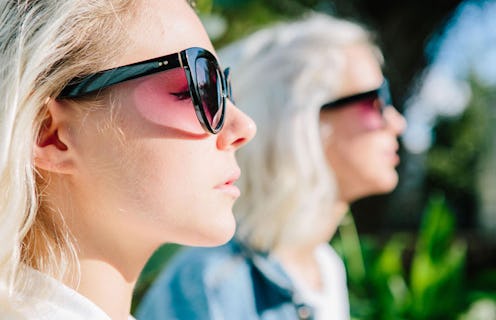Style
This Incredible Sunbathing Calculator Could Hold The Key To Stopping Sunburn For Good

Sunburn. Sunburn. Sunburn. Say it three times in front of a mirror and it's likely to appear. Alright, so that saying might be an old wives' tale but the damage that the sun can do to your skin is certainly no laughing matter. So how do you stay safe in the sun? Well, one doctor has created a sun tanning calculator that tells you exactly how long you can stay in the sun without getting burnt.
Dr. Malgorzata Koperska of Omni Calculator is behind the clever creation that takes into account a number of factors including the intensity of the sunlight, your exact skin type, and the SPF of your sunscreen.
"It's fantastic that we're able to find out how UV rays influence our skin so directly," Dr. Koperska tells me. "The equation I used to calculate the maximum safe time spent in the sun sounds a bit complicated. It's the skin phototype coefficient times the cream's SPF, divided by the current UV Index, altitude coefficient, and reflecting ground coefficient." Yep, that's gone straight over my head, too.
Luckily, all you have to do is input a few basic pieces of information for the calculator to do its thing. These include the sunlight intensity, UV index, altitude, skin type, and sun cream SPF. Of course, most of these figures will be a mystery to the average person, so Dr. Koperska has handily explained how to calculate each one.
Starting from the top. Next to the calculator, scroll down and you will find a colour chart dictating the sunlight intensity. While you can stick to the simple mode and estimate the weather outside, this site will tell you the maximum UV index figure that your nearest city will have that day.
Altitude can normally be left as it is. If you're on a beach, you shouldn't be any higher than 1,000 metres, says Dr. Koperska, adding that for every 1,000 metres, the intensity of UV radiation increases by 15 percent.
Skin type is a little tricker. The scientific name for this is skin phototype and it basically means how sensitive your skin is to sunlight. Dr. Koperska notes that the darker your skin, the more resilient it is to ultraviolet rays.
You can work your skin type out by looking at the colour of your skin and thinking about how easily you tan and burn. The types range from I to VI with I being very pale skin that always burns and doesn't tan to VI being skin that always darkens and never burns.
The last thing to do is enter the SPF of the sunscreen you're planning to use and voilà.
I tried it out to see how long I could potentially sunbathe in my back garden for on Friday. I live close to London, so a quick search revealed that the UV index figure was seven. A dermatologist once told me that my skin is pretty pale so I went for phototype II. My usual sunscreen is SPF 30, so I popped that in. It turns out I can spend seven hours and eight minutes outside today without getting burnt. (Very precise, I know.)
A quick switcheroo to a holiday climate where I would be spending most of the day in a pool revealed that I would only be protected for around two hours and 45 minutes. That's quite a big difference and something I should really take into account considering I always forget to reapply sunscreen.
The most shocking thing of all, however, is that if I sat in my back garden with no sunscreen on today, I could get burnt after just 14 minutes. *Makes a mental note to stock up on every form of sun protection going.*
Another thing that I struggle with is working out exactly which SPF I should be using. You've probably heard tales that anything over SPF 50 only gives you marginally better protection, but is that true? Well, this nifty calculator can work in reverse to provide the answer.
Fill out the rest as normal but instead of entering your sunscreen's SPF, leave that blank and input the maximum time you're planning to spend basking in the sun. The calculator will then tell you the best SPF to slather all over your body. Dr. Koperska says that if the result falls between numbers, opt for the higher one as "it's better to be safe than sorry."
But I just have one more question: How many times are you supposed to reapply sunscreen, because I'm honestly confused? According to Dr. Koperska, you should apply it 15 to 30 minutes before going outside and 15 to 30 minutes after you've managed to find a sun bed. If you embark on anything that might cause the sunscreen to rub off (including sweating), you'll need to reapply.
I'm glad that's all cleared up. Wish me luck as I attempt to conquer sunburn once and for all.